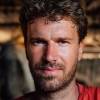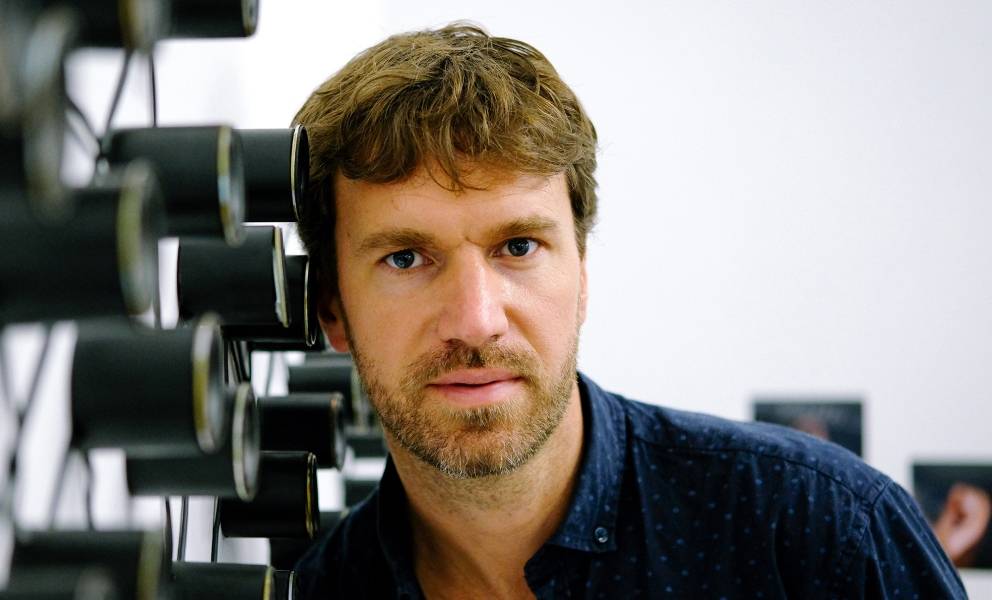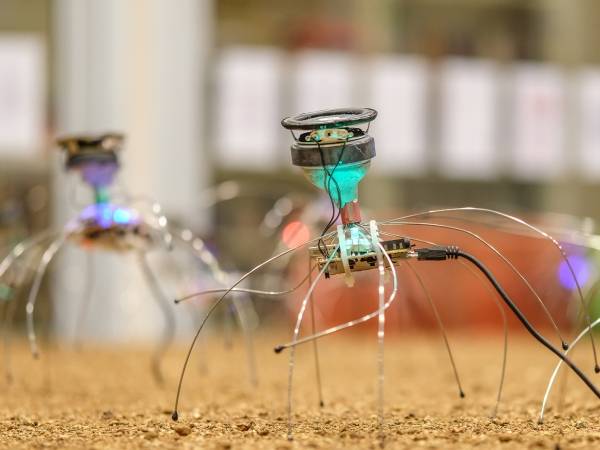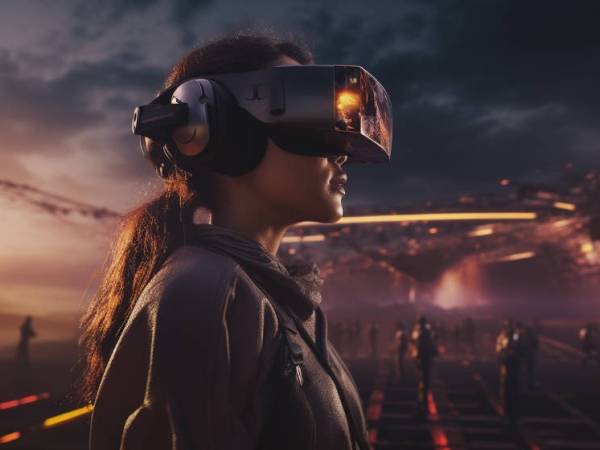13 Minuten
None of them has been “created” expressly, rather they are a compilation or a mix of experiences, lectures, and proposals from various listeners. At the end of the document, you can find some links and references, feel free to get in touch if you would like to add some other link or material.
The exercises are grouped into major topics, however since the perception of sound is a complex phenomenon, the concepts and their practical applications were thought not from a theoretical perspective, but instead from a practical point of view, aiming to stimulate active listening.
The 5 exercises below would take around 1h30, but you can of course just pick a few. Naturally, you can adapt the exercises and practice them in your own way.
Enjoy your listening!
Listening Exercise 1:
Soundwalk
Listen while you walk from one place to another (5 minutes walk)
Walk slowly and silently (without talking) from an interior place (or the place where you are at the beginning of these exercises) to a public space, outside, whether with a predefined route. During the walk, be aware of the sounds around you. Without taking notes, remember the sounds you perceive. Once you arrive at the endpoint:
- Make a list of the sounds you listened to, for as long as possible. If you’re in a group, one by one, each participant will say one sound, until you have said all the sounds listened during the walk. If you’re on your own, you can write down the list of the sounds (once you finish the walk).
-> It is interesting to see how many different sounds you’ve been able to collect in just a few minutes. You could think about them as “noises” or instead as a wide variety of sonic material options (and a very sonorous place).
- Define the sounds from the list that are closer to the listening point and those that are the most far-off. Try to group the sounds in different sound layers (close, mid, far).
- Define which are the loudest and the quietest sounds from the list (in terms of the sound produced by their sources, independently from the distance/place of the listener). Think in terms of sound levels.
Listening Exercise 2:
Erasing the boundaries between music and sound
Stay immobile (standing or sitting) in a comfortable position (5 min)
Find a place to stay comfortable (standing or sitting) for 5 minutes, with your eyes closed (a timer on the phone can help you to know when it’s the end). If you prefer, you can use an eye mask or a tissue to blind your eyes (while doing so, be careful not to cover your ears). In silence, you’ll try to listen to the sounds around you as sonic material, without relating them to their sources.
A visual analogy would be to describe an apple in this way: a round object that can be eaten, natural, green in color, with a smooth external part... In terms of sound, an example would be to describe a creaking door as a medium-high sound, which increases in crescendo to end with a bang (from closing), a punctual sound in two parts, one more melodic and the other more percussive, a sonority of wood, amplified by the sounding board of the place (the wooden floor).
To help us with the description, you can make an analogy with an orchestra and think you are now in a specific concert, with a symphonic orchestra for example (choir, strings, winds, percussion instruments… etc.), and even maybe some soloist (with a more protagonist sound, appearing only a few times).
To help us with the description, you can make an analogy with an orchestra and think you are now in a specific concert, with a symphonic orchestra for example (choir, strings, winds, percussion instruments… etc.), and even maybe some soloist (with a more protagonist sound, appearing only a few times).
After the 5 minutes of listening, try to:
- Describe each sonic material, one by one (if you’re in a group, each participant can describe one sound) without mentioning the name of the objects producing the sound (nor describing them) but focusing on the sound itself, with your own words and references (high, bass, medium frequencies / loud or quiet / where in the space, still or moving / repetitive, constant, only appearing once… etc.).
- You can start with the sounds that are part of the “orchestra” (which are present from the beginning until the end, constantly or repetitively) and then the “soloist” sounds, which could be melodic, percussive, or harmonic for example.
- You can write down your listening experience. It can be also accompanied by a sketch of this imaginary orchestra or a drawing representing your listening and sounds (without citing its sources).
- This exercise can make you think about the boundaries between sound and music, and the possible differences. Isn’t it the way you’re listening to a sound that will define if it’s music, noise, or another kind of sound?
Listening exercise 3:
Sounds and their relationship to places
Stay immobile (standing or sitting) in a comfortable position (5 min) in a different place
Walk a little bit and find another place to stay in a comfortable position for 5 min, standing or sitting. Close your eyes once again and try to listen to the sounds around you.
- Think of the information sounds can provide. Can they tell us something about the place you are? Do places have an aural identity? Are there some “sound markers” as Murray Schaffer defines them (see links at the end of the document)?
- Which geographic information sound can give? Do you have some sonic information about the place you are in? (continent, country, city, village, exact park/street/square) Does the sound give you some information about the inhabitants of the place, their culture, their society, or the relations between them?
- What time information sound can give? Can sound tell you what time is it? What day? What season is it? What year? What century?
- Think about the acoustic properties of the landscape. Which elements facilitate sound propagation better than others? Do you get better listening if you change your location? We could think about the concept of acoustic location which is well-known for some animals (such as dolphins or bats) and is also used by some blind people too.
- Think about sound recording as a documentary practice, can recordings preserve the sonic past? Are there endangered sounds? Have some of them disappeared? Can you imagine the sounds of the future?
Listening exercise 4:
Objectivity & subjectivity of listening
Stay immobile (standing or sitting) in a comfortable position (5 min) in a different place.
Walk once again a bit more, and find another place to do the following exercise, with your eyes closed, listening to the sounds around you.
- Choose the sound you consider the most representative of your listening experience and let yourself be carried along (in terms of space and/or time) by the chosen sound. Try to apply the idea of “Proust’s Madeleine”, which will transport you to personal memory, somewhere else. As an example, the sound of the road far away could remind you of the waves on the beach and transport you to your childhood holidays close to the beach.
- How could you “translate” your sonic experience? Think beyond the idea of “realism” often related to the idea of the “soundscape” of a place and think about various soundscapes and ways of listening to the same place.
While you are listening, your brain constantly eliminates the sounds considered as “noise” (this is what happens with the sound of the fridge or the radiator, for example, you suddenly notice when it stops). Even if you don’t realize it, you’re focusing on some sounds, chosen from the whole soundscape you're immersed in. This is an ability of the brain called “cocktail party” because during a party you’re able to focus on a specific discussion, even if it’s a very noisy place. It’s interesting to notice that blind people generally have difficulties applying this effect, which is a correlation between sight (watching the mouth of the people talking) and hearing (picking the specific voice of the person we want to listen to). It’s also interesting to notice that this ability generally disappears for people with hearing incapacities too.
If you are used not just to listening to some places, but to recording them as well, we could at this point think about the possible ways to share a sonic experience and go further with the idea of microphone objectivity.
- Is the listening experience the same when you listen just with your ears than when you do that through a set of microphones and headphones? Would you place yourself or the microphone closer/far to the sonic source? Think about the importance (and effects) of choosing where to place yourself and/or the microphone while recording. How do height, location, and time affect listening?
- Think about the possible ways of sharing this listening experience, with a single recording or on the contrary with the need to record different sounds, isolating them and then editing/mixing them together (to recreate the listening experience you just had as close as possible).
- Think about how other senses affect your listening experience, such as sight with the “cocktail party” effect, but also how other senses affect the ways you’re listening.
- Try to listen just with one ear, cover one ear, and then the other, alternate. Think about stereo recording versus mono listening/recording, and of the different ways available to do stereo recordings, based on the time or spectrum differences, depending on the microphones’ setup you can use (we won’t go into technical details here).
- Think about the role of the external ear in the ways you’re listening, and how a binaural recording could try to reproduce this.
While listening you can focus on the sensations sounds generate on you. Is the sound you chose pleasant or unpleasant? How does it make you feel (stressed, relaxed…)? Think of other ways to describe your sensations (warm/cold, sharp/soft, dry/moist…) when trying to perceive sound with other senses.
Listening Exercise 5:
Blind Soundwalk
In groups of 2 people, in movement, during 5 min (twice)
For this exercise, you need 2 people, in which one person (the “composer”) will guide the other (the “listener”) with the hand. The listener has the eyes closed; if necessary, you can use a piece of cloth to keep them closed, if available you can use an eye mask (or sleep mask).
The composer takes your hand, holding it at chest height with the palm facing up. He indicates the direction to you as if your hand were a "joystick" and indicates by lowering or raising the fingers if you must lower or raise your feet to overcome an obstacle (stairs, path, mound...). The guide accompanies you but does not speak so that you can continue to fully listen to the environment.
The composer proposes that you listen to the sounds around you, during a slow walk. As a listener, you will try to remember the previous exercises and the way you perceive the sounds around you. If as a composer you feel more like a “performer” you can of course produce some sounds yourself too, interacting with the elements on site.
After 5 minutes (you can use a timer on the phone) the listener opens his eyes, and you change roles (the composer is the listener and vice versa).
- How was each of your listening experiences? Can you compare this listening experience with the previous exercises: What was different? What was similar?
- Was there some narration or evolution in the listening experience? It could be from the external/sonic elements from the place, or/and from your general feeling and the way you “trust” the composer. Hearing can’t be closed (as sight) because we should always be able to listen to a possible “danger”. Maybe during this exercise, you’ve been more aware of this instinctive hearing.
- Does the exercise affect other senses, becoming more aware of them? If so, does this other sense affect listening too?
You could think for example about touch and how you can feel the space through your footsteps. Can you listen with your whole body?
At the end of each exercise, you can verbally share your experiences with the group, or write them down if you’re on your own. You can mix or alternate the exercises you find more interesting according to your interests or practices.
This compilation was made by Félix Blume and Ana Medina, for the RAPP Vienna 2022. It is destined to be changed and adapted. Feel free to get in touch to share your experiences, make some comments or remarks, and share ideas.
- Félix Blume felixblume.com/contact felixblume.contact@gmail.com
- Ana Medina Tw, Ig: @aninamedina cecilia.ann4@gmail.com
Félix Blume
Félix Blume (France, 1984) is a sound artist and sound engineer. He currently lives and works in Mexico, Brazil and France. He uses sound as the basic material in sound pieces, videos, actions, and installations. His process is often collaborative, working with communities and using public space as a context in which to explore and present his work. His practice involves an expanded understanding of listening as a way to promote awareness of the imperceptible and as an act of encounter with others. His work incorporates the sounds of various beings and species, from the buzzing of a bee to the steps of a turtle or the chirping of a cricket, as well as human dialogues with both natural and urban contexts. He is interested in myths and their contemporary interpretations, in what voices can say beyond words.
Article topics
Article translations are machine translated and proofread.
Artikel von Félix Blume
 Félix Blume
Félix Blume 








